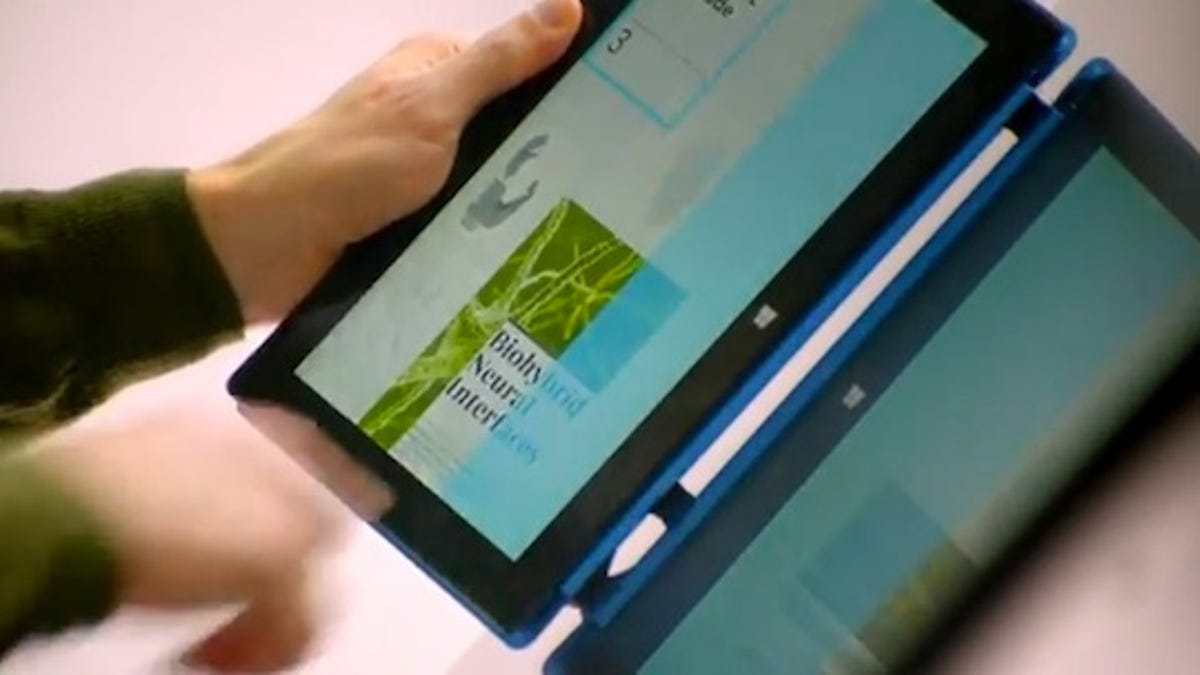Microsoft's little-screen, big-screen interactive future
Big and little screens interacting. That's Microsoft's vision of a collaborative future nirvana.

Giant interactive surfaces will complement the more mobile variety of today. That's how Microsoft sees the future.
Walk up to a massive interactive screen with a Surface tablet, tap it, and, voila, now you're working on the big screen. Or project your Windows phone screen onto a larger surface.
The point of "Microsoft's Future Vision: Live, Work, Play" (see below), a concept video that describes how we'll live in five to ten years, is that there is fluid interaction between touch surfaces and devices of all sizes.
The video debuted as the company opened its doors today on a new Envisioning Center where it looks at how technologies will shape our lives. It all fits in with Microsoft's longstanding vision of the "Home of the Future."
Those large Microsoft vertical touch surfaces are not unlike the so-called Multi-Touch Collaboration Wall used by news networks now.
And it's worth noting that the original Surface concept (now called PixelSense) was a table, not the 10.6-inch tablet we have today.
Another footnote: Intel promoted a similar idea a few years back, dubbed "Carry Small, Live Large."
It all sounds great, but one has to wonder if only people like Microsoft Chairman Bill Gates will be able to afford it.
[Via The Seattle Times ]

